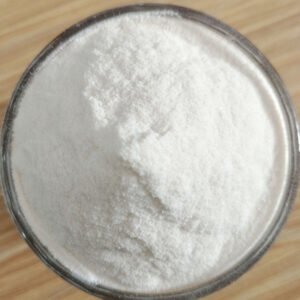×

효모 추출물 CAS No.8013-01-2 L-리나릴 아세테이트 Radix scutellariate
| 이름 | 누룩 |
| 동의어 | 누룩 효모 추출물 L-리날릴 아세테이트 황금뿌리 바이칼 두개골 모자의 뿌리 5 KG 효모 추출물 SERVABACTERPOWDER |
| 카스 | 8013-01-2 |
| 아이넥스 | 232-387-9 |
효모 – 물리화학적 특성
| 보관상태 | 방 온도 |
| 예민한 | 수분을 쉽게 흡수함 |
| MDL | MFCD00132599 |
| 사용 | 자가분해 효모 세포의 수용성 추출물. 이 제품은 아미노산, 펩타이드, 수용성 비타민 및 탄수화물의 혼합물이며, 배양 배지에 첨가제로 사용할 수 있습니다. |
효모 – 참조
| 참조 더 보기 | 1. 왕신춘(王新春), 쉬웨이(徐偉), 장젠신(姜建新) 등. 위산분해산물의 시험관내 대사과정에 관한 연구… |
효모 – 소개
초여과 등급 효모 추출물은 정제된 배양된 고품질 효모를 원료로 사용하고, 첨단 생물 지향 분해 및 막 처리 및 기타 핵심 기술을 채택하고, 엄격하게 구현된 품질 보증 시스템과 결합하여 제품 품질이 국제 선진 수준에 도달하여 국내 공백을 채웠습니다. 이 제품은 특정 조건에서 제조되었으며 비타민 함량과 유리 아미노산과 같은 기타 영양소를 유지합니다. 비타민, 특히 복합 B 비타민이 풍부한 이러한 요소는 일반적으로 0.3-0.5% 농도로 배양 배지에 제공됩니다. 특히 우유 또는 기타 유제품에서 미생물을 배양하는 데 적합합니다. 이 제품은 실험실 연구에 적합하여 유전자 조작 박테리아의 제품 대사 또는 단백질 발현 수준을 개선하는 데 도움이 됩니다. 제품 품질이 안정적이고 사용 반복성이 좋습니다. 유전자 변형 약물, 히알루론산, 백신, 인터페론 등의 최첨단 생물 공학을 충분히 충족할 수 있습니다. 현장에서 산업 생산이 필요합니다. 1. 빠른 미생물 생산 및 고밀도 배양에 적합 2. 초여과 제품의 용해도는 20%보다 높아 발효 제품의 정제에 도움이 됩니다 3. 내독소가 낮고 재현성이 좋습니다(트립톤 효모 분말) 병용, 효과가 더 좋습니다: 1. 입자가 균일하고 유동성이 좋으며 수분 흡수 능력이 향상됩니다 2. 색상이 밝고 투명하고 반투명한 용액 3. 인산염 살균 침전이 없습니다
최종 업데이트: 2022-10-16 17:29:02
효모 – 용도 및 합성 방법
작용 기전
1. 효모 뉴클레오타이드
뉴클레오티드(Nucleotide, NT로 약칭)는 질소 함유 염기, 리보스 또는 데옥시리보스, 인산을 연결하여 형성됩니다. 핵산의 기본 단위이며 생물체에서 중요한 역할을 합니다. 외인성 뉴클레오티드를 추가하면 동물의 위장 면역 체계와 간 기능에 상당한 영향을 미칠 수 있습니다. 특정 조건에서는 신체의 정상적인 생리적 기능을 보장하기 위해 뉴클레오티드를 보충해야 합니다.
2. 효모 β-글루칸
β-글루칸(β-Glucan)은 효모 세포벽의 가장 중요한 구조적 구성 요소 중 하나이며, 대부분은 물에 녹지 않거나 콜로이드 입자입니다. 다른 당과 달리 일반 당의 단당류는 β-1,4 결합으로 결합되어 있는 반면 β-글루칸의 단당류는 β-1,3 결합과 β-1,6 결합으로 연결되어 있습니다. 특수한 결합 방법과 분자 수소 결합의 존재로 인해 β-글루칸은 나선형 분자 구조를 가지고 있으며, 그 특수한 구성은 면역 체계에 의해 쉽게 수용됩니다. 연구에 따르면 β-글루칸은 면역 반응의 매트릭스로, 동물의 림프구 증식을 자극하고, 동물의 대식세포 보체를 활성화하고, 항체 형성을 촉진하고, 인터페론 생성을 유도하며, 세포 면역과 체액 면역 기능을 향상시켜 신체의 특정 및 비특이적 면역 기능을 개선하고, 동물의 건강을 개선하고, 생존율을 향상시킬 수 있습니다.
균주의 준비
사용된 균주는 맥주효모(Scerevisiaec Hansen)와 붉은색 슈도모나스(Rhodopseudomonas)입니다. 액체배지에서 복합배양합니다. 배양배지의 조성은 포도당 3%, 황산암모늄 0.5%, 탄산칼슘 0.003%, 염화나트륨 0.02%, 효모추출물 0.2%이며, 121℃에서 30분 동안 살균하고, 냉각하여 위의 두 균주와 연결했습니다. 배양조건은 30±1℃, 간헐적 환기, 환기 1:0.5-1:0.8 vvm, 교반속도 150 rpm, 배양 2-3일, 즉 성숙한 종자액입니다.
최종 업데이트: 2024-04-09 01:59:50









